Kerosene is cheap and has a very long shelf life when stored properly. Because of this, kerosene lanterns can be a good light option for power outages.
Not all kerosene lanterns are created equally, though. Here’s what you need to know if you want to have a reliable kerosene lantern for emergencies.
Note: There are some situations where using a kerosene lantern may not be safe, such as if a gas line was damaged during an earthquake or hurricane. For this reason, it’s important that you also have a battery-operated emergency light as well.
Best Kerosene Lanterns Reviewed
1. Dietz Kerosene Lanterns
Dietz is one of the most well-known brands of cold-blast kerosene lanterns. They’ve been in business since 1840, and you can often find their lanterns in antique shops.
Their current lanterns aren’t made in the USA, they are now made in China, and the quality of the glass and metal isn’t as good as it once was. However, it’s still a dependable kerosene lantern.
There are numerous options when it comes to Dietz kerosene lanterns. Below is a table with their sizes, candlepower, burn time per tank, and wick size.
For disaster preparedness, the Little Wizard lanterns are great because they burn for a long time. The #8 Air Pilot lantern is a very good pick if you need a brighter lantern, such as for everyday or outdoor use.
Note that the “Millennium” Lantern is also a cooker: you can put a pot on top of the lantern. It only produces 1200 BTUs per hour, which isn’t a lot.
You realistically won’t be able to cook meals on it. However, it’s great for heating instant soups or water for coffee/tea.
Pros:
- Lots of options
- Affordable
- Classic design
Cons:
- Thin glass and metal
2. Feuerhand Baby Special 276 Kerosene Lantern
Specs:
- Burn time: 20 hours
- Tank Size: 11.5oz
- Size (HxW): 10”x5”
- Wick size: ½”
- Candle power: 7
- Type: Cold blast
This lantern by Feuerhand only comes in one size and is pretty dim. However, it is a serious kerosene lantern made to be used – not just to sit around as a decoration.
It’s made out of steel with a galvanized coating. The galvanized coating will eventually turn a greyish color, but it means that the lantern won’t rust (at least not anytime soon!).
Compared to Dietz kerosene lanterns, the Feuerhand is sturdier and better made. The soldering on the lantern is exceptional, and you won’t experience issues with leaking, which is common with cheaper kerosene lanterns.
Pros:
- Small and lightweight
- Long burn time on small amount of fuel
- Solid construction
- Made in Germany
- Lots of color options
Cons:
- Somewhat pricy
- Dim light
3. Coleman One Mantle Kerosene Lantern
Specs:
- Burn time: 5.5 hours on high or 8.5 hours on low
- Tank size: 32oz
- Size (HxW): 16”x7.2”
- Wick size: #11 mantles
- Candle power: up to 55
- Type: Hot blast
The Coleman One Mantle is a good choice if you want a bright kerosene lantern. It has an output of approximately 55 candle powder (700 lumens) on its highest setting. Even on the low setting, the lantern is still bright.
The construction is solid and it can survive some bangs. As a result, the lantern is very heavy, though (nearly 5 lbs). It’s designed in a way that makes removing the globe and changing the mantle very easy. The lantern is made in the USA, but the globe is made in China.
The downside of a bright lantern is that it will burn through fuel quickly. Don’t expect to get more than 6 or 7 hours of burn time at the low setting.
Another downside is that there is a bit of a learning curve to using this kerosene lantern. There’s a little cup at the bottom of the lantern for alcohol: you first burn this to preheat the kerosene, so it burns better. And, unlike cold-blast kerosene lanterns, this one is hot-blast. There’s a pump for drawing fuel to the mantles.
Pros:
- Very bright
- Rugged design
- Easy to adjust brightness
- Clean burning
- Made in USA
Cons:
- Pricey
- Heavy
- Uses lots of fuel
- A bit of a learning curve
4. B&P Mason Jar Kerosene Lamp Burner
Specs:
- Burn time: N/A
- Tank size: N/A
- Size: 2.75” collar
- Wick size: 7/8”
- Candle power: 12*
- Type: Burner
This is just the burner for a kerosene lantern. It comes with a collar that you can screw onto a 2.75-inch diameter (regular mouth) mason jar. Or, you can use the burner to replace the one you find in an antique store. You’ll also need a 3-inch glass chimney for the burner.
This gives you a lot of flexibility to choose your base size and chimney style. The burner takes a 7/8” wick. They don’t list the candle power, but most 7/8” wicks will emit approximately 12 candle power.
Pros:
- Affordable
- Choose your own base and chimney
- Very well-made
Cons:
- Fount and chimney not included
5. DNRVK Glass Kerosene Lamp
Specs:
- Burn time: 24 hours
- Tank size: 10oz
- Size (HxW): 12.5”x3.15”
- Wick size: 3/8”
- Candle power: 4
- Type: Dead flame
DNRVK is a generic brand that makes a few different glass kerosene lanterns. They are small, cute, and really meant to be decorative.
This one works better than most decorative lanterns, though. Because the fount is made of glass, you don’t have to worry about it leaking – which is a problem with metal lanterns at this price point.
The problem with the glass base is that there is no easy way to refill it. You have to unscrew the collar to refuel completely. Remember that the collar and chimney get hot, so you’d have to wait for it to cool down before refueling. This could be a major pain during a power outage if you don’t have another light source.
Pros:
- Attractive
- Glass base won’t leak
- Affordable
Cons:
- Fragile
- Must remove body to refill fuel
- Very dim
- Wick adjuster breaks easily
6. Lamplight Farms 52664 Kerosene Lantern – NOT Recommended
Specs:
- Burn time: 15 hours
- Tank size: 5oz fuel
- Size (HxW): 10”x3.9”
- Wick size: 3/8”
- Candle power: 4
- Type: Cold blast
I’m only adding this to the list because I know most people will want to buy the cheapest kerosene lantern they find. Yes, this is cheap and will give you (dim) light during a power outage.
But the cost is directly correlated to the quality of the lantern. The metal is very thin and easy to dent. The soldering is terrible, and it will leak fuel. Basically, it is made to be a decorative lantern.
The biggest problem is that it is VERY difficult to change the wick. You have to partially disassemble it, and the thin metal won’t come back together again. You might not care if you want something cheap and disposable to have around “just in case,” – but I would rather pay a bit more for something that can be reliably used multiple times.
Pros:
- Cheap
Cons:
- Inferior construction
- Probably will leak
- Dim light
- Almost impossible to change the wick
Kerosene Lantern Wick Size and Brightness
The brightness of a kerosene lantern is directly correlated to the wick size: the wider the wick, the brighter the lantern will be. Below is the brightness you can expect from a kerosene lantern based on wick size.
You can dim the brightness by lowering the wick height. However, you can’t make the lantern brighter by increasing the wick height: it would cause it to burn erratically and create a lot of soot.
| Wick Size | Candle Power | Lumens |
|---|---|---|
| 3/8” | 4 | 50 |
| ½” | 7 | 88 |
| 5/8” | 9 | 113 |
| ¾” | 10 | 126 |
| 7/8” | 12 | 150 |
Can You Use a Kerosene Lantern to Heat a Room?
Kerosene lanterns do emit heat, so they will help heat a room. The larger the wick size, the more heat the kerosene lantern will produce. The table below gives you an idea of how much heat a kerosene lantern produces in BTUs.
Read more about kerosene heater wicks
Based on this calculator, an average-sized living room (16×20 feet and 9 feet tall) would require 5,808 BTUs to increase the temperature by 15 degrees F.
That means you’d need at least 7 Dietz Original kerosene lanterns to heat the room. You’d be better off with a dedicated emergency heater for indoor use.
| Wick Size | BTUs |
|---|---|
| 3/8” | 550 |
| ½” | 900 |
| 5/8” | 1100 |
| ¾” | 1200 |
| 7/8” | 1400 |
Also read:
Parts of a Kerosene Lantern
- Fount: The tank at the bottom of the lantern, which holds the fuel
- Collar: Connects the burner to the fount
- Burner: Holds the wick
- Chimney or globe: Glass covering around the flame
- Ventilation cap: Found on cold-blast lanterns; this is where used-up air exits the lantern.
- Side tubes: Found on cold and hot-blast lanterns, these bring air down to the tank so it can feed the flame from below.
- Wick adjustment knob: Turn this to increase/decrease the height of the wick
Types of Kerosene Lanterns
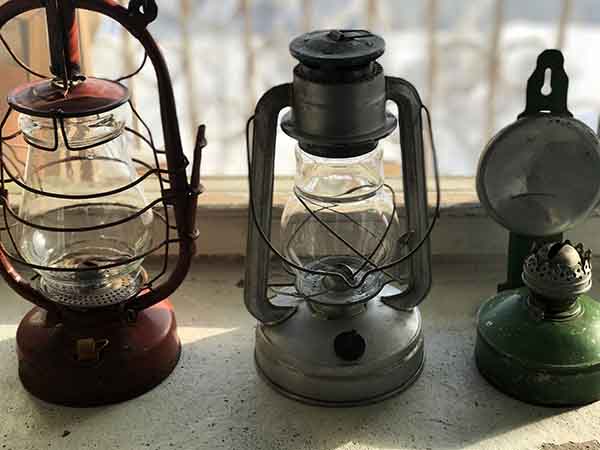
Kerosene lanterns are broken down into three types based on how they circulate air to the flame: dead flame, cold blast, or hot blast.
Dead Flame Lanterns
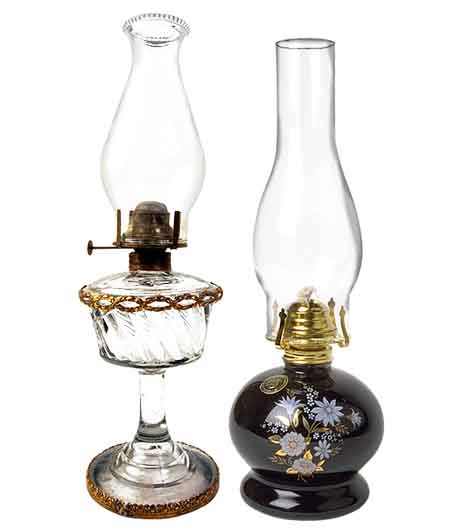
These types of lanterns have chimneys that are completely open at the top. The opening at the top creates a thermal draft which keeps the flame going. The draft also creates a brighter flame than you’d get from an open flame like a candle.
This design is very simple but has some flaws: if the lantern falls over, the wick will keep burning, and a fire could occur. Another issue is that the flame will go out in the wind.
Cold Blast Lanterns
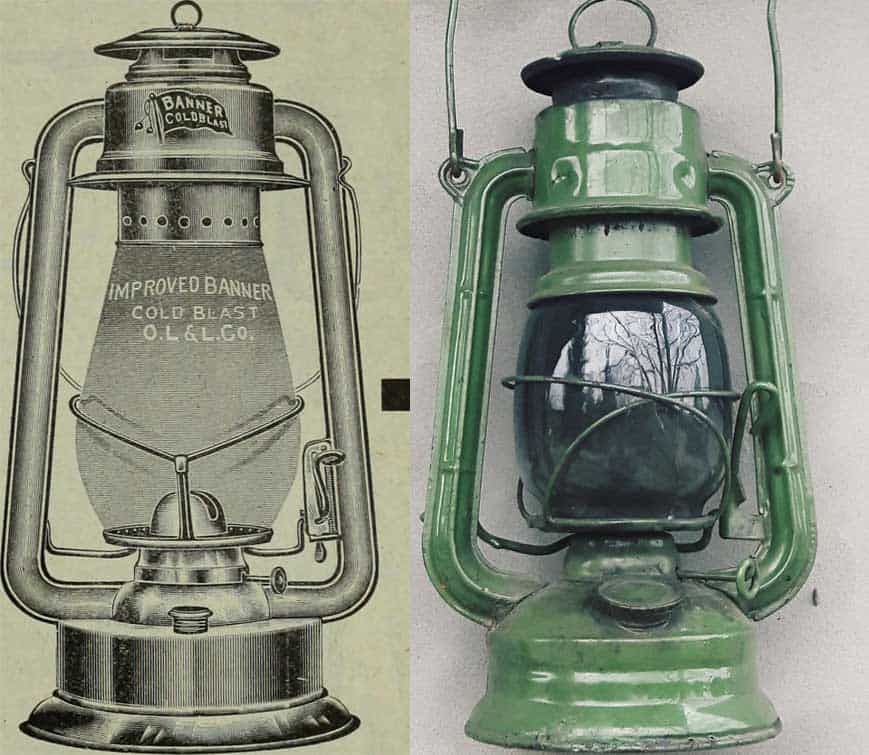
Most hurricane lanterns are the cold-blast type. Vents near the top draw cold air down into the globe and bring it to the flame.
An additional opening near the cap also draws in cold air, but this air goes down tubes at the side of the globe, into the tank, and then upwards to feed the flame from below. The used-up air is then released through a ventilation cap at the top of the lantern.
The main benefits of cold blast lanterns are:
- If the lantern tips over, the flame will go out.
- Efficient combustion, so the flame is bright
Hot Blast Lanterns
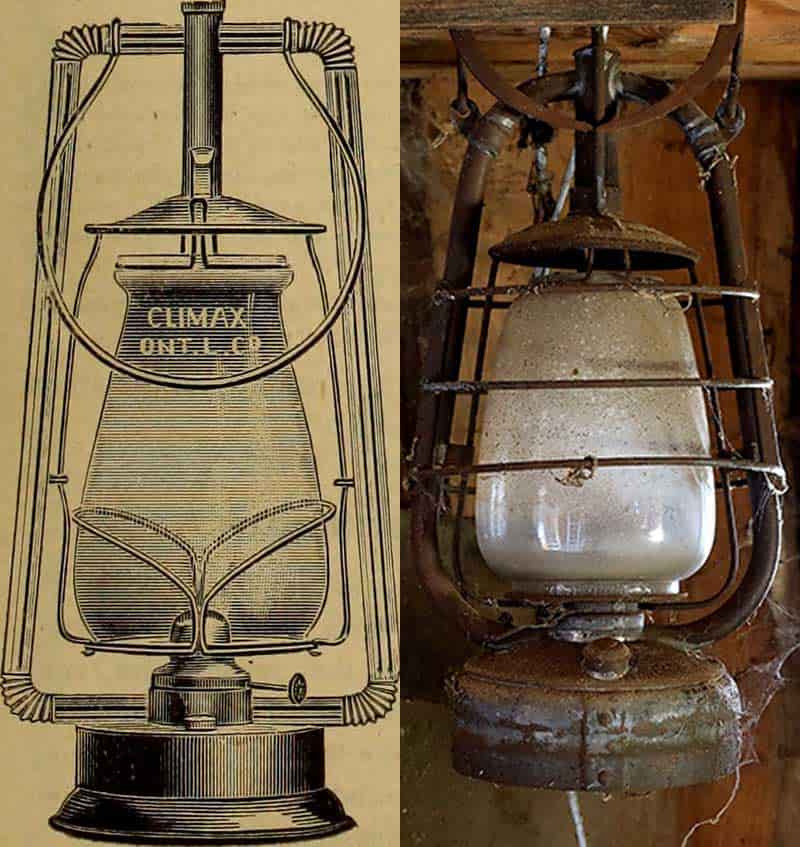
A hot-blast lantern looks very similar to a cold-blast lantern. It also has an opening above the globe to draw in fresh air and bring it to the flame.
However, there is no opening on the top of the lantern for used-up air. Instead, the used-up hot air is drawn into tubes that go down into the tank and then upwards to feed the flame from below. This design allows the lantern to “recycle” the hot air.
Like cold-blast lanterns, the flame will go out if the lantern tips over. The recirculation system means that hot-blast lanterns aren’t as bright as cold-blast lanterns but use less fuel.
They also produce less odor. Dietz makes a hot blast lantern (the Monarch #10), but it is often unavailable.
Here, you can see a diagram of the airflow in a cold-blast vs. hot-blast lantern.
Fun Fact: Cold and hot-blast lanterns bring air to the tank so it can feed the tank from below. If the tank is full, air won’t be able to get to the flame. This is why you should never fill these lanterns more than 80% full!
Buying Antique Kerosene Lanterns
You can often find old kerosene lanterns at antique stores. Some of these are of surprisingly good quality. However, a lot of them have rusty founts. This can cause fuel to leak out.
If you know how to solder, you can fix these leaks. But there may be other issues with the lanterns, such as the wick adjuster not working correctly. Because of this, antique kerosene lanterns are usually meant for decoration and not actual use.
Also, be warned that many “antique” lanterns were made in the 1950s and 1960s. They were popular during that period as decoration. These may look like authentic kerosene lanterns but weren’t made to be functional.
What Type of Fuel Can You Use in a Kerosene Lantern?
Only burn kerosene in a kerosene lantern. Not all kerosene is the same, though.
Some types of kerosene (dyed kerosene or aviation kerosene) contain additives that produce fumes when burnt, so they are not safe to use in lanterns. The additives can also clog the wick and station your lantern.
It is also essential that the kerosene have a flashpoint higher than 124 degrees F and lower than 150 degrees F. Otherwise, the flames can get out of control.
Warning: Never use gasoline, white gas, diesel, Coleman fuel, naphtha, or turpentine in a kerosene lantern. They can cause the lantern to EXPLODE.
Can You Use K-1 Kerosene in Lanterns?
Yes, you can use K-1 kerosene in lanterns. It is incredibly cheap and easy to find. However, K-1 contains some impurities like sulfur.
These can produce bad smells when burnt. For this reason, it’s only recommended to burn K-1 in lanterns outdoors. For indoor use, it’s better to use a highly-purified kerosene lamp oil that does not have additives.
Note that W.M. Barr & Co.’s Klean-Strip 1-K kerosene is unsafe for kerosene lanterns. However, their Klean-Strip Klean Heat Kerosene Substitute is safe to use.
Can I Use Lamp oil in a Kerosene Lantern?
The term “lamp oil” is confusing because it can refer to kerosene or paraffin oil. Only kerosene-based lamp oil should be used in kerosene lamps.
Compared to regular kerosene at a gas station (such as K-1 kerosene), kerosene lamp oil tends to be more purified, so it burns cleaner.
Important: In the UK, “paraffin” refers to kerosene. In the United States, “paraffin oil” refers to paraffin. This can create a lot of confusion!
Difference between Kerosene and Paraffin Oil?
Paraffin and kerosene are both oil distillates. However, paraffin oil is a much more refined version of kerosene. Because of this, it burns cleaner. It has a much higher flash point than kerosene (180-200F) and is much more viscous than kerosene. Paraffin only burns about ½ as bright as kerosene.
Can You Burn Paraffin Oil in a Kerosene Lantern?
You can burn paraffin oil in a kerosene lantern, but it is not recommended. This is because paraffin has a higher flash point and is more viscous than kerosene, so the large flat wicks found in kerosene lanterns won’t be able to draw it up.
Not only will the wick get clogged quickly, but you’ll have an erratic flame. You can also end up with incomplete combustion, so, despite paraffin being “cleaner,” you end up with more soot.
Because of this, paraffin oil is only recommended in lanterns or lamps with small (less than ¼”) round wicks.
If you have to use paraffin oil, you should dilute it with kerosene. Use a ratio of 1:10 or 2:10 (one or two parts paraffin to 10 parts kerosene).
Can You Use Vegetable Oil in a Kerosene Lantern?
Yes, you can burn vegetable oil in a kerosene lantern. However, like paraffin oil, it is not recommended.
Vegetable oil is much more viscous than kerosene, so the wick won’t be able to draw it up. The wick will quickly get clogged, and the flame will be erratic, causing lots of soot and odors. There are better uses for rancid vegetable oil than in lanterns.
Read: How to make a vegetable oil lamp
Recommended Kerosene Lantern Oil
These brands make clean-burning, clear kerosene suitable for indoor use in lanterns.
Is It Safe to Use a Kerosene Lantern Indoors?
It is safe to use kerosene lanterns indoors, but it’s essential that you only use clear kerosene. Some types of kerosene, such as aviation and jet kerosene, have additives that can release toxic fumes into the air.
Likewise, you should always have a bit of ventilation whenever using kerosene lanterns indoors to prevent carbon monoxide poisoning.
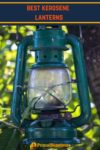
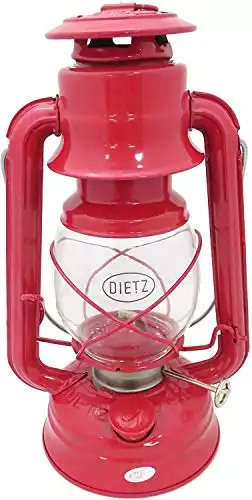
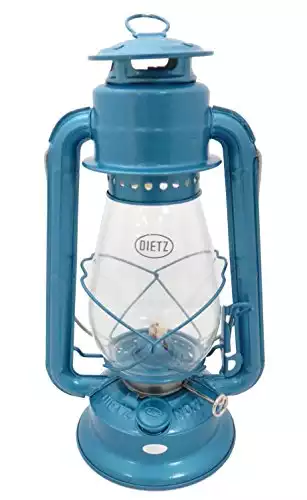
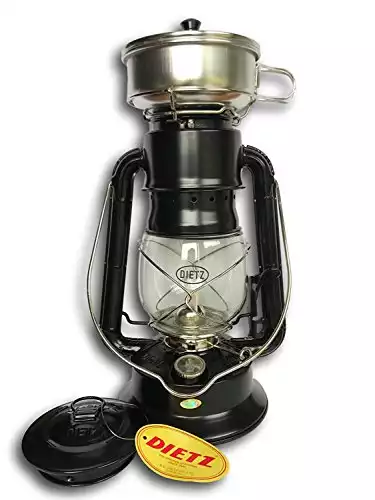
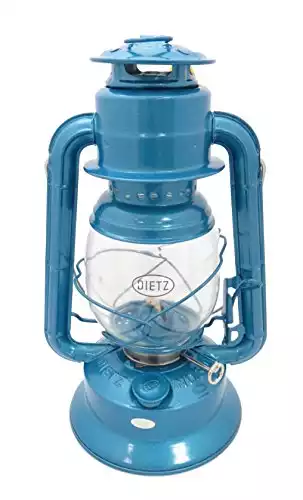
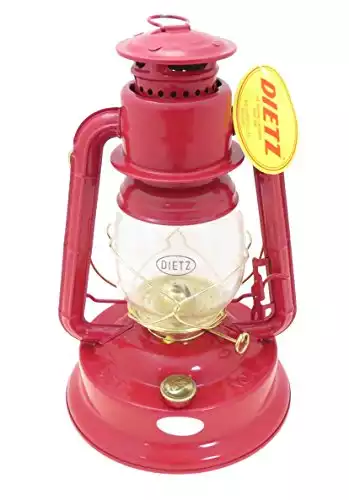
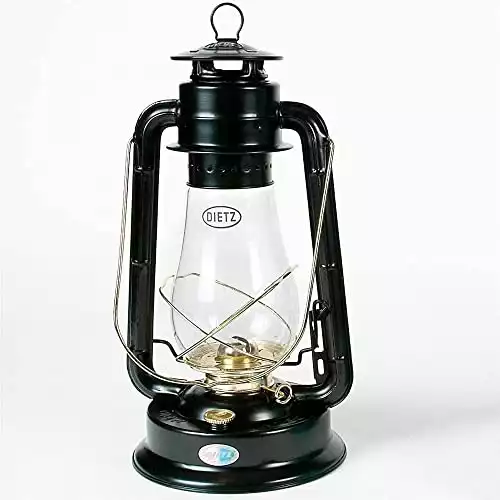
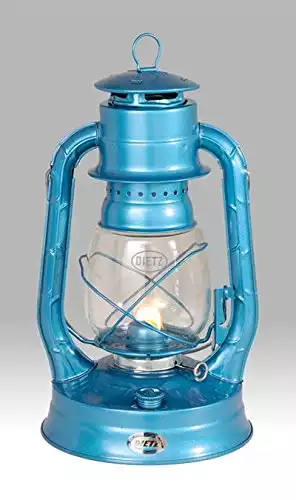










Can vegetable oil be thinned down with kerosene?
I’ve never tried it but apparently they mix well together. I still wouldn’t recommend using it in a lamp though, since it could easily get clogged. Instead, you could use it to make an improvised lamp: https://www.primalsurvivor.net/vegetable-oil-lamp/